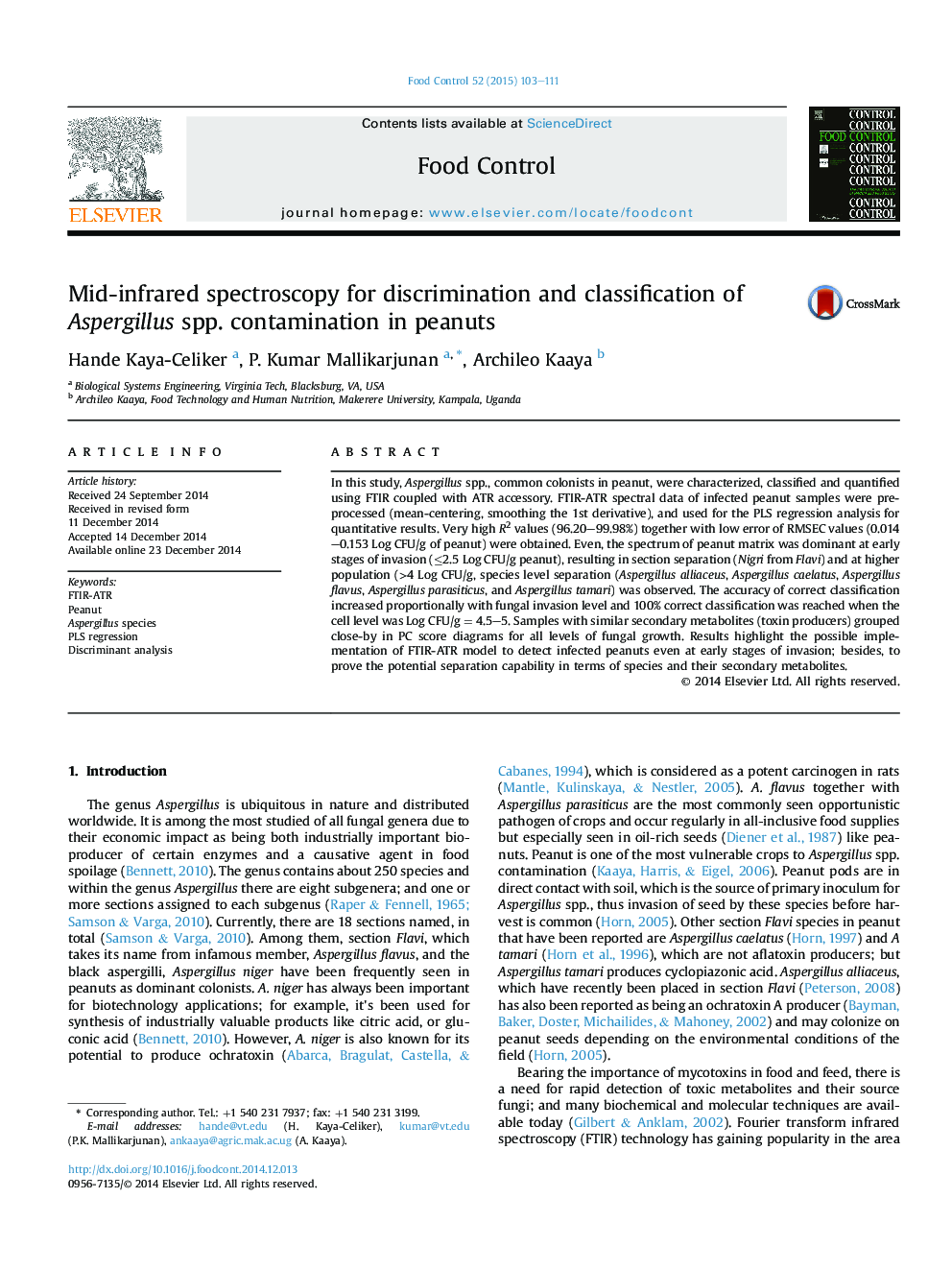| Article ID | Journal | Published Year | Pages | File Type |
|---|---|---|---|---|
| 4559254 | Food Control | 2015 | 9 Pages |
Abstract
In this study, Aspergillus spp., common colonists in peanut, were characterized, classified and quantified using FTIR coupled with ATR accessory. FTIR-ATR spectral data of infected peanut samples were preprocessed (mean-centering, smoothing the 1st derivative), and used for the PLS regression analysis for quantitative results. Very high R2 values (96.20-99.98%) together with low error of RMSEC values (0.014-0.153 Log CFU/g of peanut) were obtained. Even, the spectrum of peanut matrix was dominant at early stages of invasion (â¤2.5 Log CFU/g peanut), resulting in section separation (Nigri from Flavi) and at higher population (>4 Log CFU/g, species level separation (Aspergillus alliaceus, Aspergillus caelatus, Aspergillus flavus, Aspergillus parasiticus, and Aspergillus tamari) was observed. The accuracy of correct classification increased proportionally with fungal invasion level and 100% correct classification was reached when the cell level was Log CFU/g = 4.5-5. Samples with similar secondary metabolites (toxin producers) grouped close-by in PC score diagrams for all levels of fungal growth. Results highlight the possible implementation of FTIR-ATR model to detect infected peanuts even at early stages of invasion; besides, to prove the potential separation capability in terms of species and their secondary metabolites.
Related Topics
Life Sciences
Agricultural and Biological Sciences
Food Science
Authors
Hande Kaya-Celiker, P. Kumar Mallikarjunan, Archileo Kaaya,
